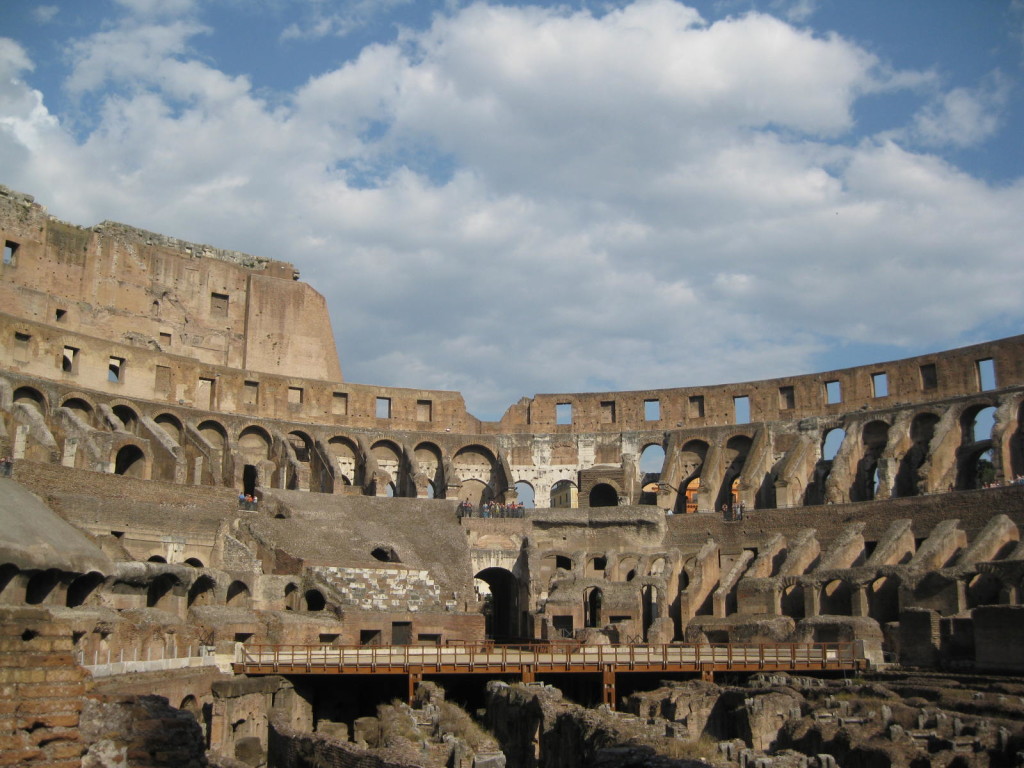 While these American gladiators are getting ready to faceoff in a much anticipated – but unusually “deflated” – Super Bowl XLIX, we’re taking a moment to journey over to Rome, Italy where the world’s first gladiators took the “field” nearly two thousands years ago in the Roman Colosseum.
While these American gladiators are getting ready to faceoff in a much anticipated – but unusually “deflated” – Super Bowl XLIX, we’re taking a moment to journey over to Rome, Italy where the world’s first gladiators took the “field” nearly two thousands years ago in the Roman Colosseum.
Built in A.D. 70-72, the Colosseum was a gift to the Roman people from Emperor Vespasian, who decreed the construction of a “new amphitheater where the public could enjoy gladiatorial combats and other forms of entertainment.”
Measuring 620 by 513 feet, with a capacity to hold nearly 50,000 spectators, it was the largest amphitheater the Romans had ever seen, and is still considered today to be one of the greatest arenas of all time.
Indeed, it laid the foundation for modern entertainment and sports, pleasing the public who “wanted to be astounded” with “silver armors, exotic animals, choreographers, music and ‘special effects.’”
As said in the book The Builders: Marvels of Engineering, published by The National Geographic Society in 1992:
“Among the largest and most imposing of all public places are those built for sports, and today, as in the days of ancient Greece and Rome, most sizable cities are home to at least one stadium or arena.”*
Hence the University of Phoenix Stadium in Glendale, Arizona – the location of the 49th Super Bowl.
Happy watching!
*Check out Bookmundi’s complete guide to visiting the Colosseum for more facts, history and visiting information.
